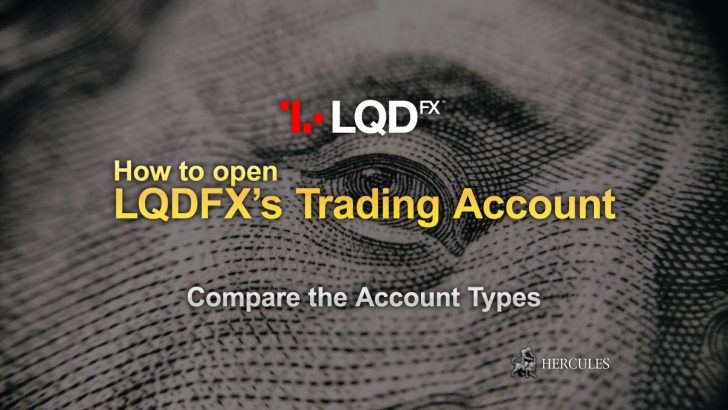Fundamentals
What is the “Fundamentals” of financial economy? Factors That Affect Currency Values.
- Factors That Affect Currency Values
- The concept of a currency rate and the basic concepts
- Factors that affect exchange rates
- The rate of inflation
- The balance of payments
- The difference in interest rates in different countries
- Activities of foreign exchange markets and speculative currency transactions
- The degree of confidence in the national and world currency markets
- The monetary policy
- National income is not an independent component that can change itself
- Market factors
The macro economic factors that are accepted as forming the foundation for the relative value of a currency, these include inflation, growth, trade balance, government deficit, and interest rates.
Factors That Affect Currency Values
Fundamental analysis is a term for several methods of forecasting the market value of a company and movement of FX rates based on the analysis of financial and production indicators.
Fundamental factors have a significant impact, but they do not give hundred-percent guarantee of the desired changes in quotations.
Before opening a position it is necessary to examine the trends and only then decide in which direction it is better to open position. When working in the financial markets technical and fundamental analyses are used.
Both types of analyses try to predict the future movement of prices.
The difference between them is that fundamental analysis looks at the market in terms of the economy than from the standpoint of the functioning of the market (technical analysis).
The school of fundamental analysis of the market came into existence during development of the applied economic science.
It has taken knowledge of the macro-economic life of society and its impact on prices of specific goods as a base.
The main task of the school of fundamental analysis is to develop and forecast new trends in price movements, therefore, a purpose of fundamental analysis is an analysis and prediction of fundamental factors and their impact on price trends.
The concept of a currency rate and the basic concepts
Exchange rate is the value of the currency of one country expressed in the currency of the other country, precious metals, securities.
Types of exchange rates are the following:
- By control method:
- fixed exchange rate;
- flexible exchange rate;
- floating exchange rate;
- By type of the market:
- current rate SPOT (TOD i TOM);
- forward rate;
- futures rate;
- market and the weighted average rate.
Outwardly, the exchange rate is the coefficient recalculation of one currency in the other determined by the ratio of supply and demand in the foreign exchange market.
However, the cost basis of the exchange rate is the purchasing power of currencies expressing the national average prices of goods, services, investment.
This economic category is intrinsic to commodity production and expresses productive relationships between producers and the world market.
As the cost is a comprehensive expression of economic conditions of commodity production, then comparability of national currencies of various countries is based on the value ratio, which is made up during process of production and exchange.
Producers and buyers of goods and services using the exchange rate of national prices compare with prices in other countries.
As a result of the comparison, the extent of the benefits of the development of production in the country or external investment is exposed.
No matter how the law of value is distorted, the exchange rate is subject to its action, and expresses correlation of the national and world economy, where the actual ratio of exchange rates is reflected.
When selling products on the world market, a product receives public recognition based on international measures of value.
Thus, the exchange rate mediates absolute exchange products in the world economy.
The cost basis of the exchange rate is due to the fact that international prices of production, which are the base for the world prices, grounded on the national prices of production in the countries that are major suppliers to the world market.
The exchange rate is needed for:
- mutual exchange of currencies for trade in goods, services, capital movements and credits. Exporter exchanges the proceeds in foreign currency exchanges for the national one as currencies of other countries cannot be treated as purchasing and payment means on the territory of the state. Importer exchanges a foreign currency to pay for the goods purchased abroad. Debtor buys a foreign currency to repay the national debt and interest payments on external loans;
- compare of prices of the world and national markets as well as the cost parameters of different countries, expressed in the national or foreign currencies;
- periodic reassessment of the company and bank accounts in foreign currencies.
The exchange rate regime
The exchange rate regime is the way a country manages its currency in respect to foreign currencies and the foreign exchange market.
It is closely related to monetary policy and the two are generally dependent on many of the same factors.
There are administrative and market regimes.
The administrative regime
The administrative regime is in the plural form of exchange rates, i.e. it is existence of differentiated exchange ratios for different types of currency transactions, commodity groups and regions.
The administrative regime is used as a stabilization step during a crisis to reduce inflation and to accumulate gold and currency reserves.
Introduction of administrative regime is an temporary step towards the normalization of the economic situation in the country and the transition to market conditions of forming exchange rate.
For the first time such a regime was used during the economic crisis of 1929-1933.
The Market regime
The Market regime is divided into three types:
- Fixed regime. It is a regime in which countries have a pegged or fixed rate. Such countries fix the value of its currency with no possibility of rejection or with very narrow limits (less than 1%) of such deviations from the other or combine currency. Leaders in the list of standard rates to which the national currency is tied, are the U.S. dollar and euro. As an example of 100% fixation is the European Union. They have fixed the exchange rates of their national currencies within the EU relative to other currencies and euro as of the last business day in 1998 and adhered to the exchange ratio till the final adoption of euro.
- A regime in which countries have limited flexibility of exchange rates. It is such a regime, when officially specified ratios between the national currencies which allow minor fluctuations are formed. The currency-corridor regime belongs to this type, i.e. forming the limits of currency fluctuations in order to stabilize the monetary system.
- A regime with high flexibility of the courses. Exchange rates can move freely, changing under the influence of factors of supply and demand, etc. Such a regime has subcategories:
- free float (freely fluctuating);
- managed floating (managed fluctuating);
- exchange rate that is periodically adjusted.
Factors that affect exchange rates
Like any price, the exchange rate deviates from the cost basis – the purchasing power of currencies – under the influence of supply and demand of currency.
The ratio of the supply and demand depends on several factors.
It reflects connections with other economic categories – cost, price, money, interest, balance of payments, etc.
There is a complex of interweaving and nomination of decisive factors.
Among them are the following.
1.The rate of inflation
The ratio of currency in their purchasing power (purchasing power parity) serves as a kind of axis of the exchange rate reflecting the law of value.
That’s why the rate of inflation has an impact on the exchange rate.
All other things being equal, the inflation rate in the country has inversely proportional impact on the value of national currency, i.e. an increase in inflation in the country leads to a reduction in the national currency, and vice versa.
Inflationary depreciation of money in the country reduces the purchasing power and a tendency to a drop in their currency’s exchange rate against currencies of countries where the rate of inflation is lower.
Alignment of the exchange rate and adjustment to purchasing power parity are occurred within two years.
This is because the daily quotation of exchange rates is not corrected on the basis of their purchasing power, and there are other factors of forming of exchange rates.
2.The balance of payments
Balance of payments directly affects the value of the exchange rate.
Thus, the active balance of payments improves the national currency as the demand from foreign debtors increases.
The passive balance of payments leads to a tendency to a decrease in the national currency’s exchange rate as domestic debtors try to sell everything using a foreign currency to repay their external obligations.
The size of the impact of balance of payments on the exchange rate is determined by the degree of openness of the economy.
Thus, the higher the share of exports in gross national product (the higher the openness of the economy), the higher the elasticity of the exchange rate.
In addition, the exchange rate affects economic policy of the state in components of the balance of payments: current account and capital account.
For example, the effect of changes in tariffs, import restrictions, trade quotas, export subsidies has an impact on the trade balance.
When the positive balance of trade is on the advance there is an increase in the demand for the currency of the country that raises its rate, and in case of negative balance the reverse process occurs.
Movement of short-term and long-term capital depends on the level of domestic interest rates, restrictions or encourage of import and export of capital.
Changes in the balance of capital have an impact on the currency, which is similar to the trade balance by its mark (plus or minus).
However, there is a negative influence of excessive short-term capital inflows into the country on the rate of its currency because it can increase the excess money supply, which, in turn, may lead to higher prices and the depreciation of the currency.
3. The difference in interest rates in different countries
The influence of this factor on the exchange rate is explained by two main factors.
First, changes in interest rates in a country affect, all else being equal, international capital flows, especially short-term ones.
In principle, an increase in the interest rate stimulates the inflow of foreign capital and its cutting promotes the reduction of outflow of capital, including national.
That is why in a country with higher interest rates capital comes into, the demand for its currency increases, and it becomes expensive.
The movement of capital, especially speculative “hot” money, increases instability of the balance of payments.
Secondly, interest rates affect the operation of foreign exchange markets and money markets.
When executing transactions, banks take into account the difference in interest rates on national and global capital markets with a view of deriving of profit.
They prefer to get cheaper loans in foreign money markets, where rates are lower, and place foreign currency on the domestic credit market, if its interest rates are higher.
On the other hand, the nominal increase in interest rates in the country reduces the demand for domestic currency as receipt of credits becomes expensive for business.
In case of taking out a loan, an entrepreneur increases the cost of their product that, in turn, leads to higher prices for goods inside the country.
This relatively devalues the national currency against a foreign one.
4. Activities of foreign exchange markets and speculative currency transactions
If the rate of a currency tends to decline firms and banks sell it for a more stable currency and it worsens the position of weakened currency.
Currency markets react quickly to changes in the economy and politics, fluctuations in exchange ratios.
In doing so, they increase opportunities of currency speculations and spontaneous movement of “hot” money.
5. The degree of confidence in the national and world currency markets
It depends on the economy and political situation in the country as well as the factors indicated above which affect the exchange rate.
Dealers take into account not only the rate of economic growth, inflation, the purchasing power of currencies, the balance of demand and supply of currency, but the prospects of their dynamics.
Sometimes, even the expectation of the publication of official data on the trade balance and the balance of payments or election results affects the ratio of supply and demand and currency rate.
Sometimes, in the currency market there is a change of priorities in favor of political news, rumors of resignations of ministers, etc.
6. The monetary policy
The ratio of market and state regulation of the exchange rate affects its dynamics.
The formation of the exchange rate on foreign exchange markets through the mechanism of demand and supply of currency is usually accompanied by sharp fluctuations in exchange relations.
Real exchange rate forms in the market which is an indicator of the economy, money, finance, credit and confidence in a certain currency.
State regulation of the exchange rate is aimed at its raising or lowering on the basis of the purposes of monetary and economic policy.
7. National income is not an independent component that can change itself
However, in general, the factors which lead to changes in the national income have a great impact on the exchange rate.
Thus, an increase in the supply of products enhances the exchange rate, while increases in domestic demand reduce its rate.
In the long run, a higher national income means higher value of the currency of the country.
8. Market factors
These factors can significantly change the value of currency at short intervals.
Thus, the overall expectations for future economic growth, changes in fiscal and foreign trade deficits directly affect the exchange rate.
In addition, the foreign exchange market participants’ expectations have a significant impact on the value of the exchange rate.
Seasonal peaks and downs of business activity in the country have a significant impact on the rate of national currency.










